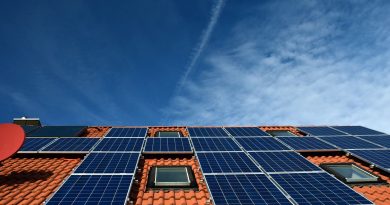What Are The Aims And Objectives Of A Solar Home System
Table of Contents Transitioning towards renewable energy is a gradual shift that’s been gaining momentum over the last decade. A Solar Home System (SHS) represents an important part of this energy revolution. As the name implies, it is a system that utilizes solar energy, harnessing sunlight through solar panels, converting it into electricity and storing it in batteries. This is used to power homes and commercial buildings alike. However, what are the aims and objectives of a Solar Home System? In this article, we delve into the fundamental goals of implementing an SHS and assess its transformative potential in shaping a sustainable future. The primary aim of a Solar Home System is to provide a reliable, cost-effective, and green energy solution that can serve as an alternative or compliment to traditional electricity systems. It harnesses a natural and renewable source of energy – the sun – to provide power to homes, cutting reliance on conventional energy sources that are often expensive and environmentally detrimental. The design and concept of the Solar Home System aim towards facilitating uninterrupted power supply which is particularly beneficial in regions suffering from constant power outage and rural areas where grid extension is a challenge. By providing a reliable source of energy, a Solar Home System can remarkably increase the quality of life and productivity of people living in these areas. The objectives of a Solar Home System are multifaceted, encompassing economic, environmental, and social aspects. These systems are designed to not only conserve energy but contribute to significant financial savings over time, reduce carbon footprints, and promote social equity. The first objective of an SHS is to harness solar radiation, a plentiful and renewable source of energy. Solar Home Systems are intended to make the best possible use of this energy, turning sunlight into electricity without causing pollution or depleting finite resources. Financial savings and independence from grid-linked electricity prices are other key objectives of an SHS. Although the upfront costs for a solar home system can be considerable, over the long term, these costs are usually outweighed by the savings on power bills and maintenance costs. By ensuring low running costs and longevity, an SHS serves as a robust financial investment. An important objective of an SHS is to minimize the household carbon footprints. The operation of a SHS doesn’t involve the emission of greenhouse gases or harmful pollutants. Thus, they contribute towards environmental preservation and efforts in battling climate change. Solar Home Systems can also play a significant role in promoting social equity. By providing dependable energy in off-grid regions, they help bridge the energy gap that exists between urban and remote or rural areas. This title of energy equity is one of the important objectives of SHS. In conclusion, the aims and objectives of a Solar Home System stretch beyond the obvious benefit of generating electricity from sunlight. They represent a clear strategy towards adopting cleaner energy solutions, promoting financial sustainability, and creating social equity. The adoption of Solar Home Systems undoubtedly brings us a step closer to a sustainable and equitable energy future. As technology continues to improve, and the cost of these systems becomes more affordable, we will likely see a continued shift towards solar-powered homes globally.Introduction
Aim of a Solar Home System
Objectives of a Solar Home System
Sustainable, Renewable Energy Source
Financial Sustainability
Reducing Carbon Footprints
Promoting Social Equity
Conclusion


